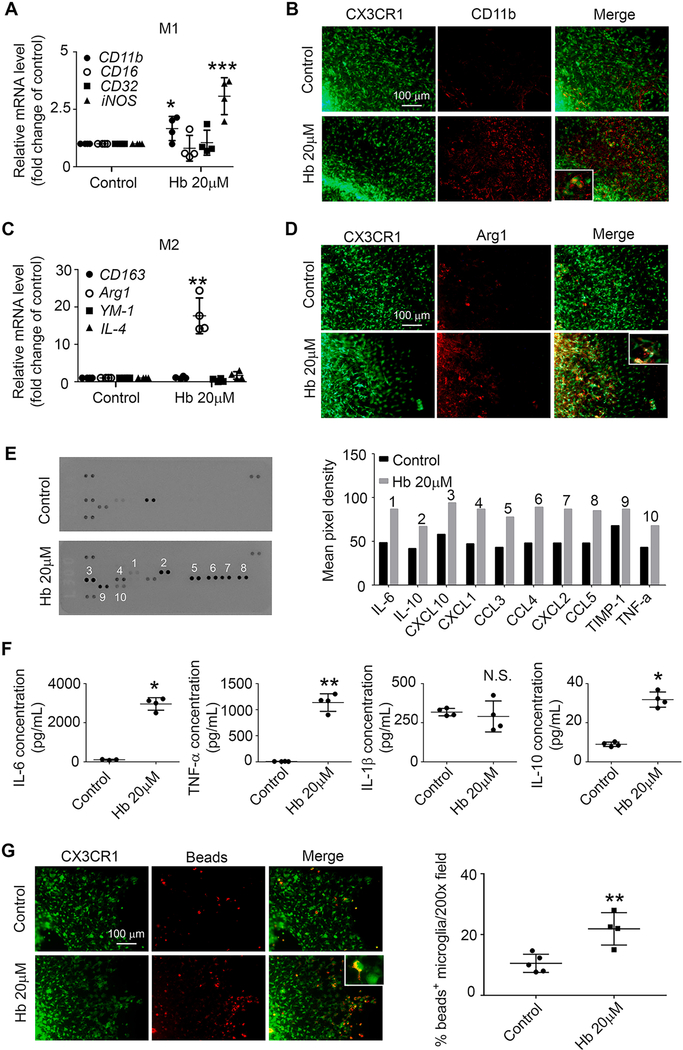Fig. 1.
Hemoglobin (Hb) induces overexpression of both proinflammatory and anti-inflammatory microglial markers in OHSCs. OHSCs prepared from CX3CR1GFP/+ pups were treated with 20 μM Hb or vehicle for 16 h. (A, C) mRNA was extracted from the OHSCs, and real-time RT-PCR was performed. *p < 0.05, **p < 0.01, ***p < 0.001 vs. Control. n = 4. (B, D) Slices were fixed and immunostained with CD11b or Arg1 antibodies. Insets are high-power images showing colocalization of CX3CR1+/CD11b+ or CX3CR1+/Arg1+ cells. (E) Culture medium was collected and concentrated for use in a cytokine/chemokine array assay. Quantification of mean pixel density is shown; n = 1. (F) Culture medium was collected and concentrated for use in an ELISA. *p < 0.05, **p < 0.01 vs. Control; N.S., not significant. n = 3–4. (G) OHSCs were incubated with fluorescence-conjugated latex beads (4-μm diameter) for 4 h and fixed before imaging. Representative images from the CA1 region and quantification of bead+/GFP+ cells are shown. Insets are high-power images showing microglia with engulfed beads. **p < 0.01 vs. Control. n = 4–5. A, C: One-way ANOVA followed by Dunn’s multiple comparison post-hoc test; F, G: Student’s t-test followed by Welch’s correction. All results (except E) are from at least three independent experiments. Scale bars: (B), (D) and (G) 100 μm.

